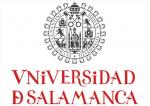Risk of introduction of H5N1 HPAI from Europe to Spain by wild water birds in autumn
Transboundary and Emerging Diseases publish this investigation article
April 1st, 2009
Highly pathogenic avian influenza (HPAI) subtype H5N1 continues to circulate across Eurasia and Africa since its unprecedented rapid spread in 2005. Diffusion by wild bird movements has been evidenced in the European Union in 2006 and 2007. Spain is an important wintering quarter for aquatic birds from northern latitudes, so identifying the critical areas and species where an outbreak is prone to happen is necessary. This work presents an assessment of the risk of introduction of H5N1 HPAI in Spain by aquatic wild birds estimating a relative risk value per province. For this purpose, an assessment of the release and exposure to the risk of infection with H5N1 HPAI of 25 selected water bird species has been carried out. Parameters considered in the assessment include H5N1 HPAI notifications from 2006 to 2008 and factors that favour the occurrence or persistence of H5N1 HPAI (wetlands` surface, low temperatures), together with aquatic wild birds` movements parameters (departure, destination, stop-overs, abundance) and parameters relative to the susceptible population in Spain: poultry density and wild aquatic abundance. Results show the relative risk for each Spanish province of experiencing H5N1 HPAI introduced by wild aquatic birds helping to identify higher risk areas
Martinez-Aviles M., Munoz MJ., de la Torre A., Iglesias I., Peris S., Infante O. and Sanchez-Vizcaino JM..
 | Servicio de Inmunología Viral y Medicina Preventiva (SUAT). Centro de Vigilancia Sanitaria Veterinaria (VISAVET). Universidad Complutense (UCM). |
 | Departamento de Sanidad Animal. Facultad de Veterinaria. Universidad Complutense (UCM). |
| Centro de Investigación en Sanidad Animal (CISA). Instituto Nacional de Investigación y Tecnología Agraria y Alimentaria (INIA). Ministerio de Ciencia e Innovación. | |
 | Departamento de Biología Animal, Ecología, Parasitología, Edafología y Química Agrícola. Facultad de Biología. Universidad de Salamanca (USAL). |
| Sociedad Española de Ornitología/BirdLife (SEO/BirdLife). | |
